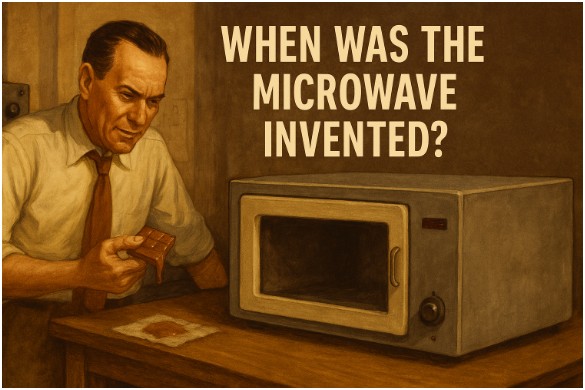The Day My Snack Melted (and So Did My Curiosity)
I still remember standing in my kitchen one night, half-asleep, staring at the microwave timer counting down my leftover pizza.
It hit me—how on earth did someone even think to cook food with waves? The question bugged me until I finally looked it up: when was the microwave invented?
Turns out, the story is as wild as it gets. It involves a radar machine, a melted candy bar, and a curious engineer who decided not to ignore the weirdest snack accident in history.
So, When Was the Microwave Invented?
The microwave was invented in 1945 by American engineer Percy Spencer, who worked for Raytheon, a defense contractor. While testing a magnetron—a vacuum tube used to generate microwaves for radar—he noticed that a chocolate bar in his pocket had melted.
That moment sparked a chain of experiments. Spencer went on to heat popcorn and even an egg (which reportedly exploded), proving that microwaves could cook food quickly and evenly. Later that same year, he filed the first patent for microwave cooking technology.
But the story doesn’t actually start there. To truly understand this invention, we need to go back a few years.
Who Set the Stage for the Microwave’s Invention?
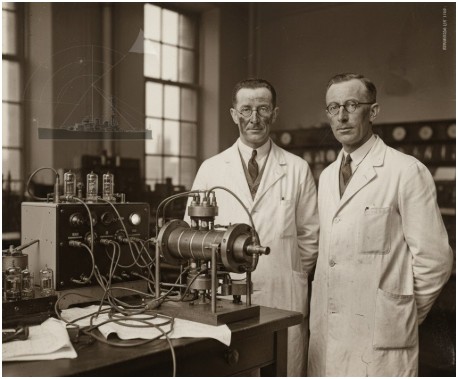
Before Percy Spencer’s snack mishap, British physicists John Randall and Harry Boot had already made a breakthrough. In 1940, at Birmingham University, they invented the cavity magnetron—a tube that generated powerful microwaves.
Their creation wasn’t meant for kitchens, though. It was a wartime innovation, used in radar systems during World War II. Without that piece of technology, Spencer’s melted candy bar moment might never have happened.
So, while Randall and Boot laid the groundwork, it was Spencer who turned science into something deliciously practical.
What Happened After the Discovery?
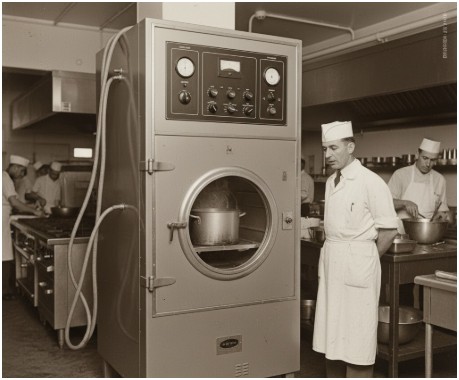
Once Spencer realized the potential of microwaves, Raytheon jumped on the opportunity. In 1947, they released the first commercial microwave oven, known as the Radarange.
However, it wasn’t exactly a countertop appliance. This thing stood six feet tall, weighed over 750 pounds, and cost about $5,000—roughly the price of a car at that time. It was mostly used in restaurants and industrial kitchens, not suburban homes.
Still, it was a start. It proved the technology worked and had commercial potential.
When Did the Microwave Become a Household Item?
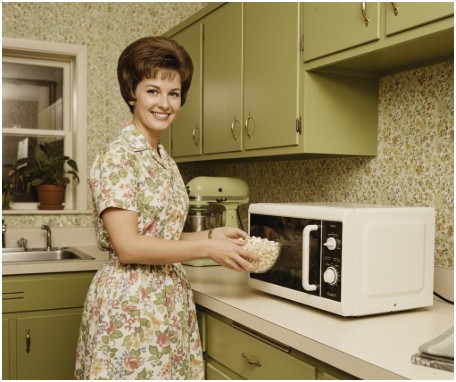
Fast-forward to 1967. By then, Raytheon had acquired a company called Amana, which released the first popular countertop microwave oven. This smaller, more affordable model cost around $495 and was compact enough to fit in most kitchens.
This was the turning point. Home cooks could now reheat leftovers, pop popcorn, and make quick meals with ease. It was no longer just restaurant equipment—it was becoming a household essential.
By the 1970s, prices dropped even more due to advances in manufacturing and cheaper electronic components. Microwaves became so common that by the end of the decade, they were practically a kitchen status symbol.
| Decade | Milestone | Impact |
| 1940 | Randall & Boot invent cavity magnetron | Enables radar and later, microwave tech |
| 1945 | Percy Spencer discovers microwaves can cook food | Birth of microwave cooking |
| 1947 | First commercial “Radarange” | Used in restaurants, very large |
| 1967 | Amana introduces countertop microwave | First home-friendly version |
| 1970s | Prices drop, sales surge | Microwaves become a household staple |
How Did People React to the Microwave at First?
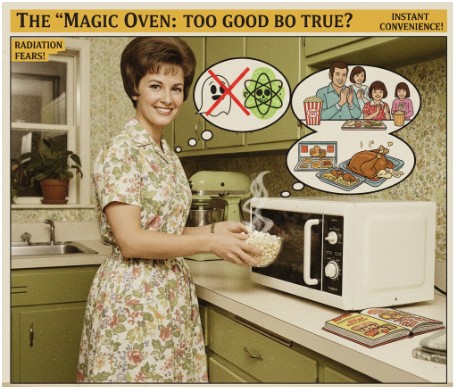
Believe it or not, people were skeptical. Early consumers were wary about “radiation cooking.” Some even thought microwaves could make food radioactive (which, thankfully, is false).
But convenience won everyone over. The ability to cook meals in minutes, reheat coffee, or defrost meat without hassle completely changed modern cooking habits.
Soon, microwave cookbooks flooded the market, and “microwave dinners” became a cultural icon.
What Made the Microwave So Revolutionary?
The microwave wasn’t just about speed—it transformed how we think about food and time. It made cooking more accessible, especially for busy families and working professionals.
You didn’t need to be a chef or wait for the oven to preheat. Leftovers came back to life in seconds, and snacks were ready faster than you could set the table.
It also led to a wave of innovation in food packaging, as companies developed microwave-safe containers and ready-to-eat meals.
FAQs About When Was the Microwave Invented
1. Who actually invented the microwave?
The microwave oven was invented by Percy Spencer in 1945 while working for Raytheon. He discovered that microwaves could heat food when a chocolate bar melted in his pocket during radar testing.
2. What was the first microwave called?
The first commercial microwave was the Radarange, launched by Raytheon in 1947. It was huge—six feet tall and weighing over 750 pounds—mainly used in restaurants.
3. When did the microwave become affordable for homes?
The first countertop model for households appeared in 1967, created by Amana, a Raytheon subsidiary. It cost around $495 and kicked off the trend of home microwaves.
4. Did the microwave come from military technology?
Yes, indirectly. The technology behind it—the cavity magnetron—was invented for radar systems during World War II by British scientists John Randall and Harry Boot.
5. Are microwaves safe to use every day?
Absolutely. Modern microwaves are designed with built-in shielding to contain radiation. As long as you use microwave-safe dishes and follow manufacturer guidelines, daily use is completely safe.
A Little Curiosity Can Change the World
It’s wild to think that one melted candy bar sparked a global kitchen revolution. When I first learned when was the microwave invented, I couldn’t stop picturing Percy Spencer standing there—bewildered, probably sticky, but excited by what he’d just discovered.
His curiosity turned a military technology into an everyday convenience. The next time I reheat my late-night leftovers, I’ll be sure to thank him (and maybe keep my chocolate out of my pocket).
Pro tip: Curiosity might make a mess, but sometimes, it also makes history.





